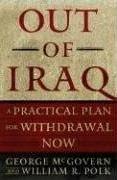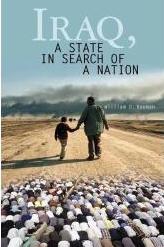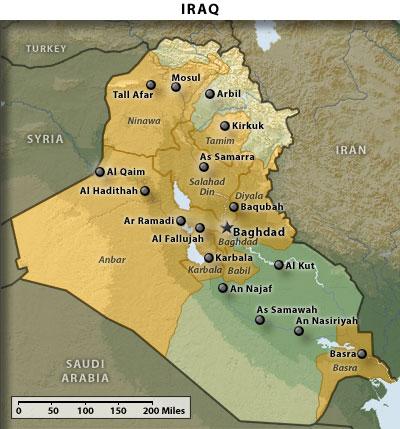![]()

By Eric Vandenbroeck
Pictural Overview of the Middle East
30 Dec.
2017: With the conflict in Syria slowing down the conflict in Yemen seems anything but over:

9 Dec.
2017: While the UN security council is to meet in order
to discuss the US decision to Jerusalem as Israel's capital, here an analysis of
the Jerusalem problem and the two-state solution option. Jerusalem Unveiled.
|
23 Dec. 2016: While there is no clear
resolution in sight when it comes to settling the Israeli and Palestinian
dispute, including the governments that offer the Palestinian Authority
political and financial support, are loath to risk their relationship with
Israel by advocating the creation of a Palestinian state, another conference
is about to take place. Paris Peace Conference redux 15 Jan.2017:
|
25 Dec. 2016: The Syrian civil war and the Middle East going forward.
|
20 Dec.
2016: From
Versailles to the Making of the Modern Middle East P.8: British
rule, Arab Spring-revolt, and the Syria crisis today.
14 Dec.
2016: Sykes-Picot
granted Britain the right to administer Syria after it captured the Levant from
the Ottomans in 1918.In 1919, London conceded at the Paris Peace Conference
both Levantine entities to France that moved quickly and, aware of Hashemite
progress, settled on creating Greater Lebanon.From
Versailles to the Making of the Modern Middle East P.7: The unresolved sectarian issue in Lebanon today.
8 Dec.
2016: The
profound effects of the British Empire’s actions in the Arab World during the
First World War can be seen echoing through the history of the 20th century. From
Versailles to the Making of the Modern Middle East P.6: The importance
of oil, the ‘Arab question’, and the British.

--------------------------------------------------------------------------------------------------------------------------------------
In recent months a number of Arab States, like for example Amman, have celebrated the
centennial of the 'Arab Revolt' 1916-2016.
20 Oct.
2016: Soon
I will be posting a series of three research articles about the Balfour
Declaration and several more about the Versailles Treaty and the Making of the
Modern Middle East, whereby first here an introductory: During the First World
War, British strategy for the Middle East was aimed at protecting India, which
meant keeping India’s numerous Muslim subjects tranquil. Initially, this gained
Whitehall’s support, as it feared foreign troops in the Muslim Holy Land would
make the followers of Hussein, the Sharif of Mecca, Emir of the Hejaz and
potential British ally, oppose him. From Versailles to the Making of the Modern
Middle East P.1: The ‘Arab revolt’, Britain, and the Collapse of the Ottoman Empire in
the Middle East.
24 Oct.
2016: Mark Sykes returned to England where, almost immediately, he was
thrust into negotiations with M. Charles François Georges-Picot, French
counselor in London and former French consul general in Beirut, to try to
harmonize Anglo-French interests in ‘Turkey-in-Asia’. Picot on the other hand
had ‘expressed complete incredulity as to the projected Arab kingdom, said that
the Sheikh had no big Arab chiefs with him, that the Arabs were incapable of
combining, and that the whole scheme was visionary.' From Versailles to the
Making of the modern Middle East P.2: The Arab question and
the ‘shocking document’ that shaped the Middle East.
26 Oct.
2016: The rebellion sparked by the Hussein-McMahon correspondence; the
Sykes-Picot agreement; and memoranda such as the Balfour Declaration (to be
dealt with in detail) all have shaped the Middle East into forms which would
have been unrecognizable to the diplomats of the 19th century.From
Versailles to the Making of the modern Middle East P.3: The Menace of Jihad and How to Deal with It.


29 Oct.
2016: French
rivalry in the Hijaz; the British attempt to get the French government to
recognize Britain’s predominance on the Arabian Peninsula; the conflict between
King Hussein and Ibn Sa’ud, the Sultan of Najd; the
British handling of the French desire to take part in the administration of
Palestine; as well as the ways in which the British authorities, in London and
on the spot, tried to manage French, Syrian, Zionist and Hashemite ambitions
regarding Syria and Palestine.From Versailles to the
Making of the modern Middle East P.4: The ‘Arab’ and
the ‘Jewish’ question.
6 Nov.
2016: The
British authorities in Cairo, Baghdad, and London steadily lost their grip on
the continuing and deepening rivalry between Hussein and Ibn Sa’ud, in particular regarding the possession of the desert
town of Khurma. British warnings of dire consequences
if the protagonists did not hold back and settle their differences peacefully
had little or no effect. All the while the British wanted to abolish the Sykes–
Picot agreement. From Versailles to the Making of the modern Middle East P.5: The Syrian question.
16 Nov.
2016: This is the most important and longest part. Following, a gripping
account of the swashbuckling during the Paris Peace Conference deliberations
including the Arab/Syrian, the King-Crane Commission, impasses and some
breakthrough at the end. From Versailles to the Making of the modern Middle
East P.6: The Paris Peace Conference deliberations.
25 Nov.
2016: One
of the most far-reaching outcomes of the First World War was the creation of
Palestine, initially under Britain as the Mandatory, out of an ill-defined area
of the southern Syrian boundary of the Ottoman Empire. Considering this, on 16
Nov. 2016, the British Parliament debated the Balfour Declaration and how its
upcoming 2017 Centennial should be handled. Yet even professionals are often
not familiar with the details surrounding the Balfour Declaration, thus here a
detailed investigation. The true history of the Balfour Declaration and
its implementations P.1.
28
Nov.2016: Showing
the topic is of ongoing relevance, following the British Parliament last week,
tomorrow a discussion about the Balfour Declaration is to take place in the
House of Commons. My analysis, however, is wholly independent of pro or contra
stance and instead focuses on discovering the historical details that have been
left out in recent discussions. The true history of the Balfour
Declaration and its implementations P.2.
2 Dec.
2016: Apart
from the strategic consideration that they needed Palestine for the imperial
defense of India, the decision by the War Cabinet to authorized foreign
secretary Balfour to make a declaration of sympathy with Zionist aspirations in
November 1917, one could ad, was also a curious blend of sentiment (the
romantic notion of the Jews returning to their ancient lands after 1,800 years
of exile) and anti- Antisemitism (world Jewry was a force that could vitally
influence the outcome of the war) also led them to this decision. The true history of the Balfour
Declaration and its implementations P.3.

29 November 2016 discussion
about the Balfour Declaration at the British Houses of Parliament.
5 Dec.
2016: As
we have seen, in the end, the idea was to use President Wilson’s recognition of
the Balkan nations’ right to self-determination – namely, freedom from Ottoman
rule – to overcome his opposition to the implementation of this same policy in
the Middle East. By supporting Zionist aspirations in Palestine, the Lloyd
George Government thus strove to compel Wilson to expand his policy regarding
the 'small nations' from the European regions of the Ottoman Empire to its
Asian territories. The true history of the Balfour Declaration
and its implementations P.4.
Nov. 24,
2008: While the capital-rich and financially
liquid Arab states of the Persian Gulf are among few in the world that can view
the current crisis and see potential opportunities, there are a couple of
notable exceptions. Geopolitical Implications.
Febr. 24, 2009: Iran and the Protest in Saudi-Arabia Today. The Shi’ite-Suni Devide.
Case
Study: Shi'ite Lebanon and Hezbollah


Not to long ago hardly a day wents by
without a massacre carried out by either a Shiite death squad or an extremist
Sunni group. The Occupation and its Legacy, P.1.


Iraq Confidential:
Explaining how the three main Iraqi communities, the Kurds, the Shia and the
Sunni, responded to the growing conflict, and occupation that followed, we
answer ‘what next’. The Occupation and its Legacy, P.2.

Iraq in Fragments: Iraq's civil war
is the messy end of a country that never worked as a voluntary union and that
brought misery to most of its people most of the time. By invading Iraq and
mismanaging the aftermath, the United States precipitated Iraq 's collapse as a
unified state but did not cause it. Partition-the Iraqi solution-has produced
stability in most of the country and for this reason should be accepted. In
Baghdad and other mixed Sunni-Shiite areas, the United States can not contribute to the solution because there is no solution,
at least in the foreseeable future. It is a tragedy, and it is unsatisfying to
admit that there is little that can be done about it. But it is so. No purpose
is served by a prolonged American presence anywhere in Arab Iraq. The war's
architects believed they could change the Middle East. And so they did. The
Occupation and its Legacy, P.3.

Hezbollah praises
victory over Israel. As a jab to the UN force in Lebanon Nasrallah announced;
Hizballah is stronger than
ever before we still
have more than 20,000 rockets:



Hezbollah
trains children to be martyrs, Egyptian paper says Hezballah has recruited more
than 2,000 children 10-15 years of age to form armed militias. Unknown to most we checkep up who and what
Hezbollah really is:


Who/What Hezbollah really is: The Larger
Picture.
November
14, 2006: Hezbollah chief Sayyed Hassan Nasrallah said Nov. 14
the government of Lebanese Prime Minister Fouad Siniora will be overthrown.
In spite of the
rhetoric by millions of Muslims worldwide - of a Western religious crusade, the
new conflict between the post-Christian West and Islam - is more a
clash between secular materialism and a revived religion. Case Study:
|
Where
the only moment of meaningful contact was the last two years of the Clinton
administration, with the advent of the Bush administration, the two political
cultures were increasingly defined by a shared belief in confrontation.
Politics, therefore, define Iran-US relations. Populist and rich with
emotion, this narrative of confrontation has permeated the popular
imagination and driven the elites. The first step, therefore, must be to
confront these myths, recognize their importance and potency, and begin their
deconstruction. Research
Report: The Iran US Conflict.
As we
have seen also in the case of China, among the more pernicious of myths is the
political myth of victimization. It also, tends to empower through the
removal of moral responsibility. Where the hostage crisis and Iran-Contra had
an impact on US perceptions vice-versa happened during the Iran/Iraq War when
the US in turn leant towards support for the Iraqis. Research Report: The Iran US
Conflict Today: |
Iranian
President Ahmadinejad on IRINN TV: 'Lebanon is the scene of an historic test, which will determine the future of
humanity'.
Truth is
generally the first casualty in war on the battlefields of the Middle East,
especially when Israel is involved. For neither Israel nor the Jews are seen
- whether by themselves, by their friends, or by their foes - as a nation and a people like others. One
form of irrationality, shared by some evangelical Christians and (some) Jews,
has it that Israel is the 'Zion' of prophecy, part of
God's plan. Following
recent media
doctoring, now the war of
Arab TV. Anyone with
access to a television has the illusion of direct access, forgetting that the
mass media itself determines what we see and how we see it. We frequently pointed out, how nations and populist politics are rooted in
foundation myths that underpin their historical identity. The mass media’s
avowed intention of exciting emotion, however compounds and extends rather
than explains and scrutinize. Case
Study: Pan-Arabist Media: The
strengthening that Arab-Islamic groups, including al-Qaeda, Hizbollah and Hamas have offered powerful cultural
productions as the bastion of secular Pan-Arabism and individual policies of
Arab transnational, to offer new visions of Arab identity. The New Pan-Arabism
P.2: |
Research Report: Saudi-Arabia and Terrorism:

For updates
click homepage here


